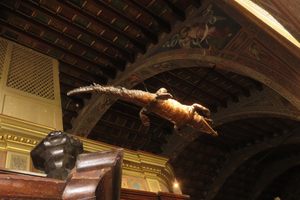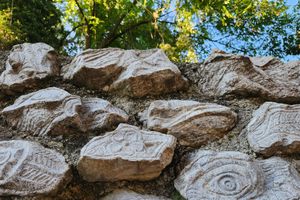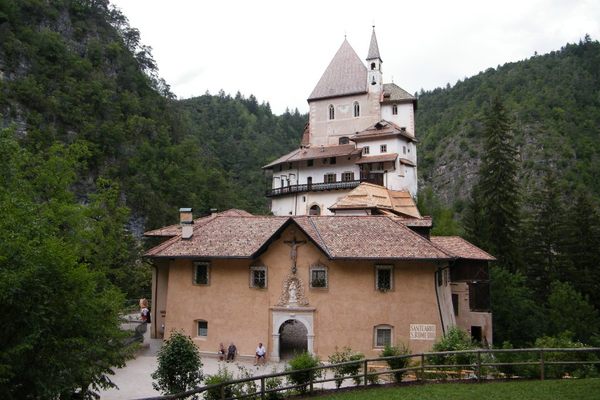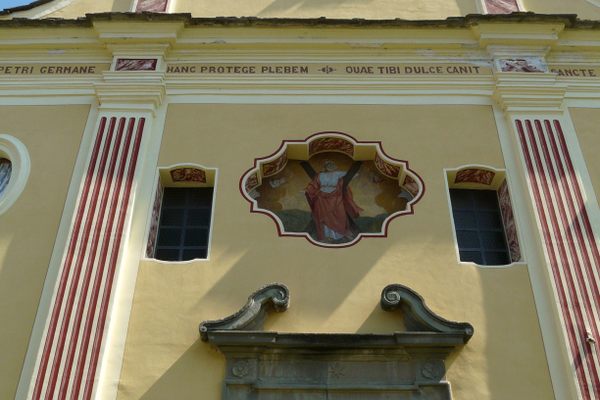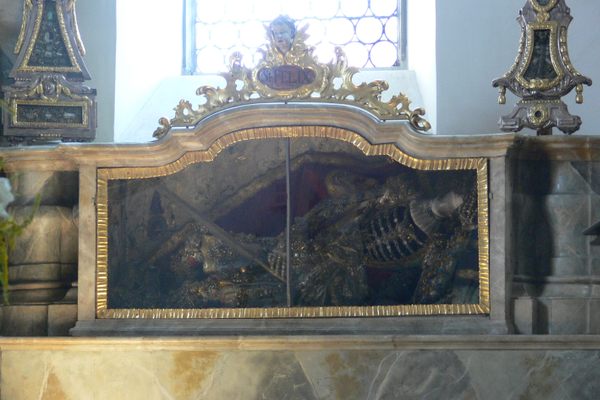About
Perched on a rocky outcrop, the structure of Santuario di San Patrizio is an intriguing fusion of a sanctuary and a fortress. The rock and the walls blend harmoniously into a continuum that is gently disrupted first by the arches and then by the roof of the complex. It is not obvious whether the rock threatens or sustains the sanctuary.
This sanctuary is dedicated to none other than the patron saint of Ireland. The worship of this saint during the Middle Ages in a valley in the Italian Alps may seem baffling. The reason for this practice is shrouded in mystery and folklore. The most credible legend maintains that the sanctuary was founded by Anglo-Saxon merchants that escaped the forces of Barbarossa and took refuge in the area in the 12th century. Even though there is no definitive proof that this is the case, the chronology of this legend is consistent with the history of this sanctuary, which began in the 13th century with the construction of a small shrine housing the statue of St. Patrick. Construction on the main body of the sanctuary didn't start until the 14th century, and it took another century to be completed. The sanctuary complex has been restructured multiple times through the centuries. What can be seen today is the result of the renovation work carried out during the 1980s.
The oldest and most interesting part of the sanctuary is the sacello, a grotto-like chapel from the 13th century. To this day, it is possible to appreciate the paintings of Jacopino Scipioni dating back to 1514 as well as those of other unknown artists from the same era.
The most striking fresco in the sacello is that of the Last Judgement, in which Christ appears at the top, resting on a globe, with his right hand welcoming the blessed to Heaven, and the left condemning the sinners to Hell. To reinforce the message, a lily protrudes from Christ’s right ear, and a sword from the left ear, in reference to Isaiah, which says that Christ does not judge according to what he sees, but according to what he hears. On the right of Christ is the Virgin Mary, and on his left is John the Baptist.
Underneath these three figures are two angels blaring trumpets to wake up the dead, which appear in the lower section of the fresco, rising from their tombs and awaiting their judgement. The devil can be seen pulling a woman in distress by the hair, heading towards the flames of eternal punishment. In stark contrast, on the other side of the fresco, is Saint Peter leading a congregation to Heaven. The scene is reminiscent of a 1493 woodcut by Michael Wolgemut.
Related Tags
Flavors of Italy: Roman Carbonara, Florentine Steak & Venetian Cocktails
Savor local cuisine across Rome, Florence & Venice.
Book NowPublished
June 13, 2023


































